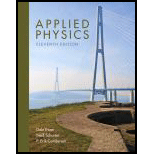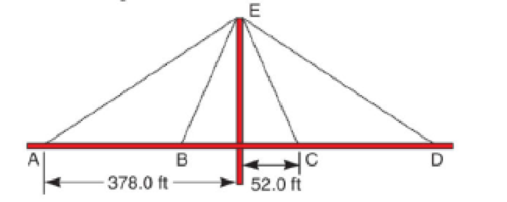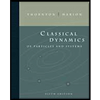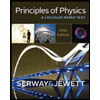
Concept explainers
The New Clark Bridge is an elegant cable-stayed Bridge. Its design requires cables to reach from the road deck up to the tower and back down to the road deck on the other side of the tower, as shown in Fig. 3.41. In order to determine the best method for shipping the cables, the shipping company needs to know the lengths of the shortest and longest cables. Given the measurements in the diagram, determine the indicated total lengths BEC and AED, respectively.
Tower's height above the road deck = 176 ft

Figure 3.41
Want to see the full answer?
Check out a sample textbook solution
Chapter 3 Solutions
Applied Physics (11th Edition)
Additional Science Textbook Solutions
Conceptual Physical Science (6th Edition)
Sears And Zemansky's University Physics With Modern Physics
University Physics Volume 2
Physics (5th Edition)
Essential University Physics: Volume 1 (3rd Edition)
Tutorials in Introductory Physics
- If Vx = 7.90 units and Vy = -6.20 units, determine (a)the magnitude and (b)direction of V⃗.arrow_forwardVector A has x and y components of 8.70 cm and 15.0 cm, respectively; vector B has x and y components of 13.2 cm and 6.60 cm, respectively. If AB+3C=0, what are the components of C?arrow_forwardA lady walked 350 m west, then 200 m north, what is the magnitude of her displacement?arrow_forward
- The world land speed record is 763.0 mi/h, set on October 15, 1997, by Andy Green in the jet-engine car Thrust SSC. If we subtract 183 mi/h from this speed, Express the resultant speed in meters per second.arrow_forwardunder what circumstances would a vector have components that are equal in magnitude?arrow_forwardA shot is thrown from a height of h = 5.75 feet with an initial speed of v0 = 41 feet per second and at an angle of θ = 42.5° with the horizontal.find the total time of travel and the total horizontal distance traveled.arrow_forward
- what is the magnitude of the vector (10i-10k) m/s?arrow_forwardIn a sport feast, a soccer ball is kicked from ground level over level ground with an initial velocity that has a vertical component of 20 m/s and a horizontal component of 30 m/s. Using g = 10 m/s^2, what is the ranged of the soccer ball?arrow_forwardThe components of vector A are: Ax = 5.1 m and Ay= -5 m and the components of B are: Bx= -2.6 m and Ay = -4.3 m. What is the resultant of the two vectors?arrow_forward
- Can the magnitude of a vector ever (a) equal, or (b) be less than, one of its components?arrow_forwardA toy car moves along a flat table, and a meter stick is used to mark its position at different times. If the car starts at a location of xi = 5.00 cm and moves to a location of xf = 15.0 cm then what is the displacement of the car in centimeters?arrow_forwardFind the x- and y-components of the vector v→ = (9.0 cm/s, −x-direction)arrow_forward
 Classical Dynamics of Particles and SystemsPhysicsISBN:9780534408961Author:Stephen T. Thornton, Jerry B. MarionPublisher:Cengage Learning
Classical Dynamics of Particles and SystemsPhysicsISBN:9780534408961Author:Stephen T. Thornton, Jerry B. MarionPublisher:Cengage Learning Principles of Physics: A Calculus-Based TextPhysicsISBN:9781133104261Author:Raymond A. Serway, John W. JewettPublisher:Cengage Learning
Principles of Physics: A Calculus-Based TextPhysicsISBN:9781133104261Author:Raymond A. Serway, John W. JewettPublisher:Cengage Learning

